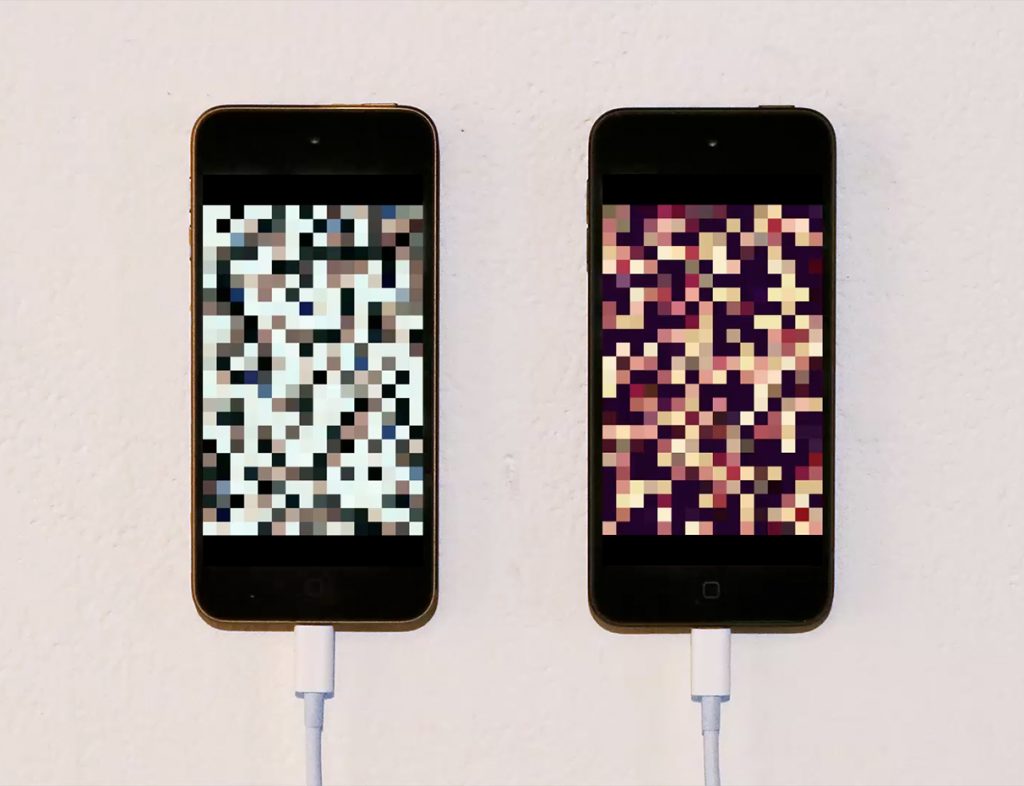
2013-2016
Installation featuring iPhones with custom software (Processing) and appropriated images
(earlier version: Digital projection with custom software (Max/MSP) and appropriated images)
Dimensions Variable
Impossible (It’s Possible) explores the world of mobile online romance through the lenses of data and probability. On dating platforms like Grindr, Scruff, or OKCupid—like other forms of social networking—the complexity of people’s lives is often reduced to answers to a limited number of fields or questions, such as key physical demographics, employment or education path, favorite movies, music, etc. This presentation of the self as an accumulation of data reflects Deleuze’s concept of a shift from the individual to the dividual in late capitalism, and as Galloway’s work suggests, often constitutes not a unitary individual via a set of key characteristics, but rather subjects whose characteristics allow them to serve as nodes in many different networks. On an emotional level, the possibility of finding someone with compatible interests or sensibilities—and ultimately a “match,” whether for a night or long-term—can be daunting, overwhelming, and hopeless; there are nearly infinite possibilities and so many data points, but it’s difficult to know which combinations might work.
Impossible (It’s Possible) is a digital projection based on a custom piece of software (written in Max/MSP and later Processing) that pulls two images, pixelates them, and scrambles the array of pixels. Thus, while the content of the images remain the same, the pixels are constantly reordered (once per second), so that for each image, there is only one correctly resolved image. The chance that each image will correctly resolve is quite large (and grows exponentially from even a highly pixelated image); the chance that both will display the actual image at the same time is near impossible. As an autobiographical project, the image on the left is always my current personal profile picture, while the images on the right are drawn from the profile pictures of potential partners I interact online. The images are uploaded to a server and create an ever-growing database (while the pixelation protects users’ anonymity). As the number of potential images grows, so too do the number of pixels in each image, both enabling the possibility of a richer image and making it much less probable that the images will correctly match.
iPhone installation shown in “From Me To You” at Pro Arts Gallery (Oakland), January 2016

